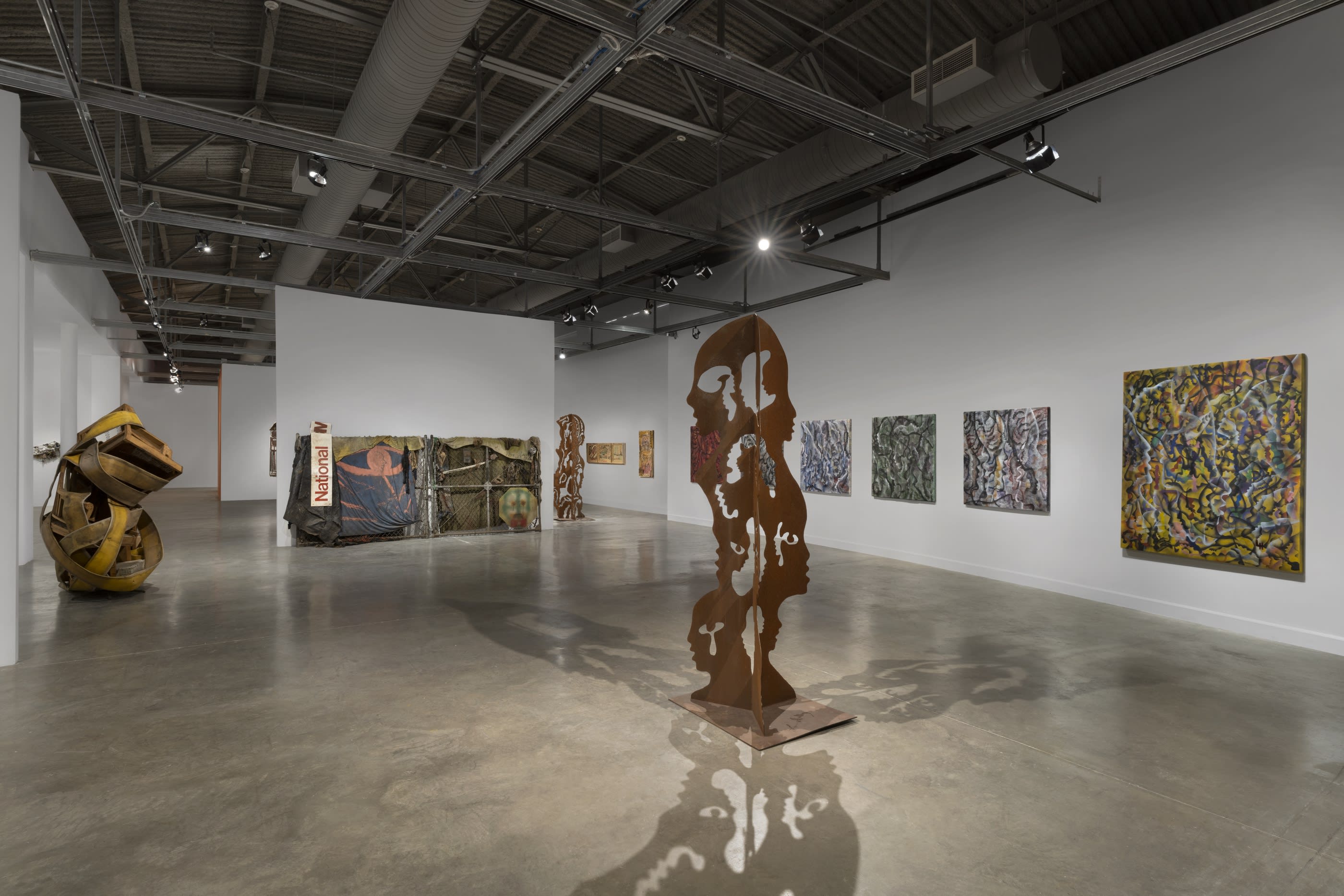17 May 2023 “Art is a wound turned into light,” said the seminal French painter Georges Braque.
Currently on view at the Museum of Contemporary Art, North Miami, through October, Lonnie Holley’s career-spanning exhibition "If You Really Knew" amply shows an artist’s capacity for turning wounds into bright, illuminating light.

Lonnie Holley: If You Really Knew, installation view, MOCA North Miami, Miami, FL, US, 2023. Photo: Zachary Balber
Of course, some wounds are collective. When Lonnie Holley was growing up in Birmingham, Alabama, in the Jim Crow South, life was wounding for Black people. In addition to legalized segregation and systemic discrimination, Black people were routinely subjected to harassment, threats, and physical violence. If it wasn’t the Ku Klux Klan perpetrating acts of terror and intimidation against Black communities, it was law enforcement itself.
On May 2, 1963, Birmingham children of Holley’s age and younger were blasted with fire hoses, clubbed, and attacked by police dogs during the grim Children’s Crusade. This unspeakable event would finally compel President John F. Kennedy to publicly support federal civil rights legislation, clearing the way for the passage of the Civil Rights Act of 1964.
Fire hoses feature prominently in Holley’s work, including The Water This Time, a jarring found-object sculpture. Once emblematic of state-sponsored terror, the decommissioned and now impotent fire hose hangs loosely on a wooden cross, with most of it crumpled up like yesterday’s newspaper in the waste bin of history at the bottom. Perhaps the artist is jabbing our amnesic collective memory to recall these atrocities lest we repeat them. After all, history does tend to repeat itself, with Black Lives Matter protesters physically brutalized by tear gas and rubber bullets in 2020, for example.
Other wounds are more personal, yielding art that is much more beautiful. Holley’s "Sandstone" series is not as conceptual as some of his other work in the exhibition, but these precious, delicately hand-carved sculptures are imbued with layers of meaning and history like sacred totems.
The “sandstone” is a soft, sandstone-like material made of sand, clay, and industrial remnants discarded by Birmingham’s once-flourishing steel industry. Its decline during the 1970s devastated the city’s Black workforce, only exacerbating economic and racial inequality. But even more poignant is the fact that Holley first used the material in 1979 to carve tombstones for his sister's two children after they died in a house fire.
What Women Are Afraid to Lose (The Fires on Our Planet) is a fiery mixed-media painting on quilt and a nod to the feminist art tradition. The issue of women’s historical struggle for bodily autonomy, once more inflamed by recent anti-abortion legislation, touches a personal nerve for Holley. To this day, the artist remains haunted by his memory of a mother who gave birth to an incredible number of children — 27 in total (he was the seventh) — and endured a lifetime of bleak physical and mental health as a result.
Holley believes that his mother gave him away when he was 4 years old and that nameless handlers later traded him for a bottle of whiskey. The artist’s childhood was dismal, spent in and out of foster care when not homeless.
Although Holley's work is now in permanent museum collections around the country and has even been displayed at the White House, this is the celebrated septuagenarian artist’s first major exhibition in the South. (Holley's work was exhibited at NSU Art Museum in 2021 as part of the museum's group show "Art of Assemblage.") It’s certainly a long overdue distinction for this son of the South whose art sings so bitterly and sweetly about the region’s historical wounds, which are also his own.
Holley's influence on Southern art is highlighted in this exhibition through the addition of works from a cohort of regional artists he has championed throughout his career, including Miami native Purvis Young, Thornton Dial, Mary T. Smith, and Hawkins Bowling.
Of course, "If You Really Knew" is not the only reason to visit MOCA this summer. In its adjacent "South Florida Cultural Consortium" exhibition, visitors can discover eye-opening work from 12 intergenerational South Florida artists spanning sculpture, film, and site-specific installations.

